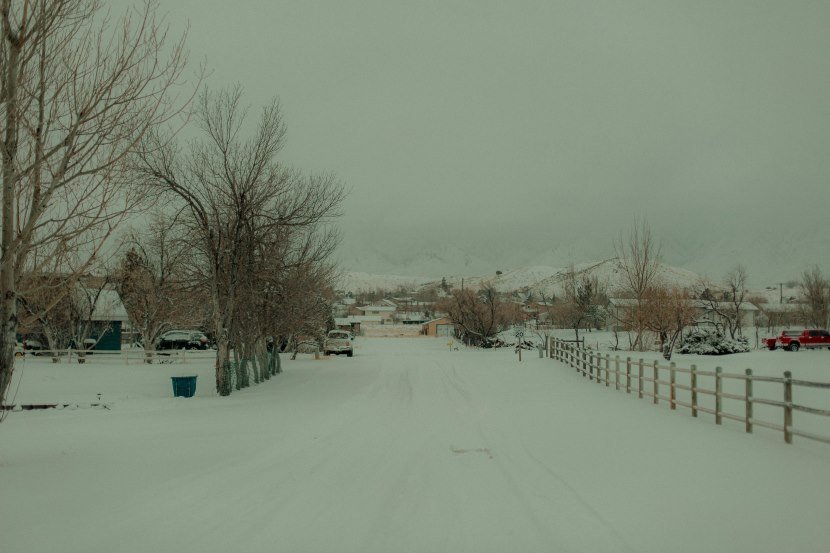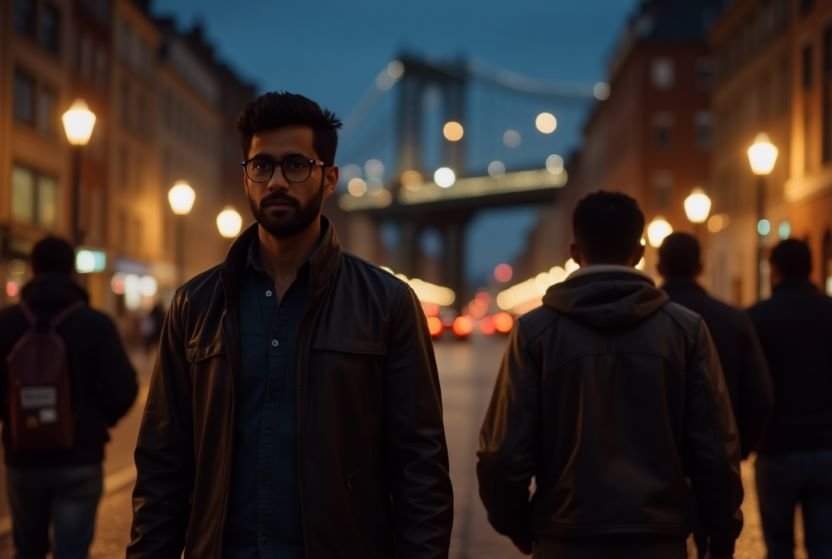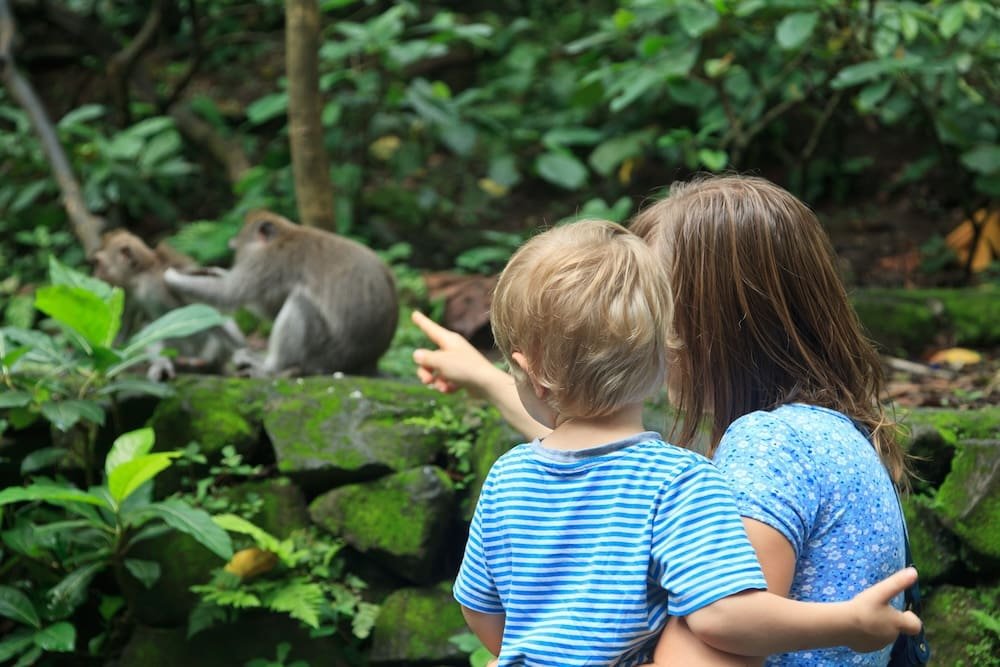Tips & Advices
Snowstorm Disrupts Travel In Eastern Australia: Safety Tips Tourists Need To Know

Monday, August 4, 2025
Over the weekend, several towns in eastern Australia were blanketed by the heaviest snowfall in decades, causing widespread disruptions. Snow, which reached as much as 16 inches (40 cm) in some regions, covered cars, rooftops, and gardens, creating a winter wonderland in places that typically experience milder climates. This rare phenomenon, caused by a cold air front, has had significant effects on both local residents and travellers, with major disruptions to transportation and essential services.
A Storm of Historic Proportions
The snowstorm, which affected parts of northern New South Wales on Saturday, has been described as the most substantial snowfall in the region since the mid-1980s. According to official meteorological reports, snow also reached parts of Queensland, marking the first occurrence in ten years. The intense weather conditions, combined with heavy rain and thunderstorms, resulted in over 1,455 incidents recorded by the New South Wales State Emergency Service.
Authorities have warned that the snowstorm’s aftermath will continue to impact the region for several days, with thousands of homes expected to remain without power for up to 24 hours. Many areas also reported widespread mobile phone outages, complicating communication during an already challenging situation. The combination of snow, rain, and storms has caused major travel disruptions, particularly for those attempting to move through affected regions.
Travel Disruptions and Safety Concerns
The heavy snow and flooding created hazardous conditions, with more than 200 vehicles becoming stranded on the roads. Travellers were advised to avoid unnecessary journeys, especially in the most affected areas. Several roads were impassable due to snow accumulation, and the threat of flooding made matters worse. Additionally, storm damage to buildings and structures compounded the risk, prompting the issuance of major flood warnings in New South Wales.
The transport disruptions were not limited to land routes. In the aftermath of the storm, air travel in parts of eastern Australia also faced severe delays and cancellations. Airports in Sydney, Brisbane, and other major cities experienced disruptions, with limited visibility and adverse weather conditions causing air traffic to be rerouted or delayed. Travellers were strongly encouraged to check flight statuses before heading to the airport and remain prepared for potential delays.
For tourists planning on visiting Australia, particularly in New South Wales and Queensland, understanding the local weather patterns and preparing for sudden storms or snowfalls is crucial. Those hoping to experience the rare snowfall should plan ahead, ensuring they are equipped for cold weather and aware of emergency services available in the region.
A Rare Event With Serious Implications for Tourism
Despite the chaos and disruptions, the heavy snowfall was met with excitement by some locals and tourists alike. Footage from the affected regions showed residents and travellers embracing the unusual weather conditions. Snowmen were built, and snowball fights were had, providing a rare opportunity for Australians to engage with winter activities in a part of the country typically known for its warm climate.
However, the snowstorm also highlighted the volatility of Australia’s weather, particularly in the context of climate change. Meteorologists have pointed out that such extreme weather events have become more frequent in recent years, adding an element of unpredictability to travel plans. Tourists should remain cautious about the potential for sudden shifts in weather, especially when venturing into regions known for their unstable weather patterns.
The tourism industry in Australia, especially in the winter months, may see an uptick in visitors eager to experience these rare conditions. However, travellers must be aware of safety concerns, particularly in terms of road and air travel disruptions. Local authorities have emphasized the importance of monitoring weather forecasts and ensuring that safety measures, such as proper clothing, travel advisories, and emergency contacts, are in place.
Impact on Local Communities and the Search for Missing Persons
As authorities responded to the storm’s aftermath, reports emerged of a car becoming stuck in floodwaters on Saturday evening. Tragically, a female passenger was swept away during the incident, prompting a search operation. Thankfully, the woman was found and rescued safely, but her case underscores the importance of safety precautions when traveling in extreme weather conditions. Local police and emergency teams continued their search for other potential victims, while reinforcing warnings about the dangers of flooding and unstable road conditions.
For tourists and travellers, staying informed about local weather patterns and adhering to safety guidelines is critical during such extreme events. Travel in flooded areas should be avoided, and proper precautions should be taken when venturing into snow-covered regions.
What Travellers Should Know About Visiting Eastern Australia During Winter
For those planning to visit Australia during the winter months, particularly in New South Wales and Queensland, the following tips can help ensure a safe and enjoyable trip:
- Check Weather Forecasts: Before embarking on a trip, travellers should monitor the local weather updates, especially in regions prone to sudden snowstorms and heavy rainfall.
- Stay Updated on Transportation Disruptions: Keep an eye on road conditions, particularly in areas with heavy snowfall, and check for delays or cancellations at airports.
- Prepare for Cold Weather: Even in Australia’s typically warm climates, winter conditions can be severe. Travellers should pack warm clothing, especially in mountainous or elevated regions.
- Follow Safety Instructions: In the event of an emergency, travellers should adhere to evacuation orders and local advisories issued by authorities.
- Follow Local Authorities and Services: In regions affected by snow, rain, and storms, it’s important to follow instructions from the New South Wales State Emergency Service and other local agencies to stay safe.
In conclusion, while Australia’s rare snowstorm event may provide an exciting and unusual experience for some travellers, it also serves as a reminder of the importance of safety and preparedness when traveling during unpredictable weather conditions. Whether seeking adventure in the snow or exploring local attractions, being aware of the local weather and following safety guidelines is essential for a safe and enjoyable journey.
Tips & Advices
Women Who Travel Alone Are Sharing The Safety Tips They Swear By

When it comes to traveling, I’ve been to several places around the world over the last few years.
As I continue to travel and explore the world, I am continuously concerned about my safety when traveling solo. That’s why I’ve reached out to the rest of the women on the AllEars team to share the tips we swear by when it comes to traveling safely.
No matter how many times I’ve done it, I still get nervous when it comes to traveling solo. It’s hard not to at times! You hear lots of stories online that can be scary and create anxiety around the thought of going anywhere alone. (Thank you, Liam Neeson and the movie Taken specifically.)
Our entire team travels constantly, those on and off camera! From solo trips to Disney World and Disneyland to heading to Hong Kong and Tokyo, we have been across the globe and have picked up a trick or two along the way. While we want to see and do everything, our top priority when traveling alone as women is safety. (Frankly, everyone should be concerned about being safe!)
Starting off first, be vigilant! Keep your head on a swivel at all times. It doesn’t matter if you’re in a new country or at the mall in your hometown; you always need to be aware of your surroundings. That means no mindless scrolling or listening to music as you walk from destination to destination.
I know, we all love to check TikTok every 5 minutes (and I’m super guilty of that), but the more distracted you are, the easier a target you are. If you have headphones in, you might not be able to hear when someone is walking up to you. Next, we always make sure that someone knows your location. Personally, my husband, mom, dad, brother, sister-in-law, and friends all have my location, so they know where I am no matter what.
I utilize Find My Friends on my iPhone, but I have also used Life 360 in the past just to make sure that trusted people in my life knew I was safe and where I was supposed to be. I also let them know when I’m supposed to arrive at my location and when I’m checking out. If it’s a longer flight, I also make sure to share my flight tracking number with my family as an extra precaution.
It’s also important to share your Uber or Lyft ride details with people when you’re in a car alone. You can have your friends or your family track your specific ride just for peace of mind. These ride-share apps also have safety features that will ask you if you’re okay if your car veers off the path or stops for too long. I’ve been in cars that had to take detours because of unexpected wrecks, and the app will send me a notification asking me to confirm my safety, which I really appreciate.
Uber also recently introduced a new feature that will allow women to select women drivers specifically. According to Uber, the new feature is called Women Preferences. Its features are “designed to give women riders and drivers more choice, more confidence, and more flexibility when they use Uber.” These new features are being tested in Los Angeles, San Francisco, and Detroit for now, but we are really hoping they expand to new areas soon.
When it comes to where we stay, our entire team shared the same sentiment. Make sure you read LOTS of reviews, and if you’re staying at an Airbnb, consider only staying at locations that have a female host or a couple. When reading reviews, make sure that you’re reading reviews from women and their experiences at each location as well. Yes, other people can write helpful reviews, but women tend to understand what safety precautions we’re looking for and can reiterate if a location has what we need.
Another major tip is to not post anything online that would share your exact location. While we do love a good Instagram post, including anything like your exact hotel, hotel room number, any future plans, and more can put you in a dangerous situation. Many people on our team go the extra mile and don’t post at all until they are home from their trips. If you’re being extremely cautious, that is definitely the route to go!
Next, never ever admit that you’re traveling solo! This one is one that’s a tough habit to learn, but we highly encourage you to do so. If people strike up a conversation with you, just say that you’re meeting someone soon or that your friend is in the bathroom. I’ve even gone so far as to fake a phone call when I was uncomfortable in a situation and traveling alone. It might feel strange at first, but there’s safety in numbers (even if those numbers aren’t real.)
I also like to keep pepper spray or other self-defense items when I can, but you can’t always bring them with you. Disney World is a great example of a place where we’ve traveled alone and had to leave our pepper spray keychain at home. That’s when we consider how to use other items like our Owalas if ever necessary. (Those water bottles could definitely be a weapon if needed!)
We also love to utilize fanny packs or other small bags that go in front of our bodies when traveling solo. Sure, they might not seem as cute as a Loungefly at times, but it’s infinitely safer to keep your important items with your name and information close to your chest, where it is much harder to grab. Pickpockets are everywhere, and while they might not initially be after your personal information, they might get it when they grab your wallet or passport.
If you’re driving yourself, always hustle to your car (stay off that phone) when leaving a location, and be sure to check under and behind your seats. Be sure to lock your car as soon as you get in, and if you’re really uncomfortable, don’t be afraid to ask for security to escort you to your car. We’ve done it before, and we will happily do it again if it makes us feel safe. Keep your head high when walking, too, even if you don’t feel confident, just fake it for those walks alone.
Finally, no matter what, our ultimate tip is to trust your gut! The entire team agrees on this point that if you feel unsafe, even if there’s no tangible reason to feel that way, remove yourself from the situation. Trust your intuition and yourself. There have been many times when our gut has told us something was off, and we have decided to trust it. No one knows you like you know yourself, so be confident in what you feel.
At the end of the day, we love solo traveling! It’s offered us so many experiences and helped us grow as people. We love seeing the world and would hate to miss out on it, but we also want to make sure we can continue to travel as safely as possible. As always, be sure to keep following AllEars for more travel tips and tricks.
Tips about Air Travel
What are your best solo travel tips? Tell us in the comments!
Tips & Advices
Safety Advisory for Indian Nationals in Dublin: Key Tips for Travelers and Precautionary Measures: Know More

Monday, August 4, 2025
As Dublin remains highly popular among Indian citizens, particularly students, professionals, and tourists, it is important to pay attention to travel safety measures. The recent targeting of Indian nationals has caused India’s Embassy in Ireland to issue an advisory warning on 1st of August, 2025, to take extra safety measures while travelling.
The issued advisory in the embassy was done so after a notable increase in subsequent attacks against Indian students and people working in the Dublin area. The number of International Indian students living in Ireland is over 90000 people, which consists of 25000 students, so the safety of the travelling people is highly important.
What’s Happening in Dublin: Recent Safety Concerns
The Indian Embassy in Dublin has issued a warning advising citizens to be especially careful when travelling to Dublin. The alerts have been issued for the Indian population living in Ireland, mostly due to incident s like the one involving Dr. Santosh Yadav, a Dubline based scientist, who was assaulted, and the assault on Indian nationals living and working for Amazon in the country.
The Indian population living in Ireland must be very cautious especially in low populated areas. Above all be very conscious of your surroundings. Although Dublin is one of the most friendly and welcoming cities in the world, one must be very thoughtful in the way, manner, and time while moving around the city.
Guidance for Indian Nationals and Tourists Traveling to Dublin
For the purpose of this blog, we aim to help Indian nationals visiting Dublin, whether for work, study, or leisure, stay safe while traveling. We have compiled a list of practical tips to ensure every traveler’s safety in Dublin.
1. Stay in Well-Populated Areas
When planning your trips or sightseeing around the city, it’s best to remain within the busy and well-lit areas, especially during the evenings. Refrain from solo walking in quiet areas, especially during non-peak hours. In the case that you require movement around the city during late hours, make use of reputable and trusted transport services such as taxi and rideshare companies.
2. Keep Emergency Numbers Handy
Having important emergency contact numbers is essential while travelling. The Indian embassy in Dublin has provided a helpline number for any urgent assistance, which is 0899423734. Keep this number saved in your phone for easy access in case you need help.
If anyone encounters any distressing situations, you can reach out to local law enforcement or the embassy helpline. However, if you are traveling in a group, it is best to inform someone of your location. This is especially important if you are heading out in the late hours.
3. Travel in Groups When Possible
Being around other people enhances safety, especially in new locations. If you are in Dublin for tourism, ensure you are with friends or other travelers, particularly when navigating the city after nightfall. Not only does this lower your chances of running into trouble, but it enhances your ability to get help if something goes wrong.
4. Be Mindful of Your Surroundings
Always stay in tune with your surroundings and your environment. When in public spaces, especially in quieter areas, refrain from looking at your phone or putting on headphones. If things don’t seem right, trust your instinct and take the best course of action, which would be to move toward safer places.
5. Keep Your Embassy Informed
Embassies and consulates keep locals informed when there are safety updates, which is handy for any travelers. For Indian citizens, not missing out on safety updates from the Indian Embassy in Dublin is, in fact, an actively beneficial choice. The embassy keeps an eye on the situation and will keep the people informed.
6. Stay Updated on Local Advisories
Maintaining awareness of pertinent social issues, safety notifications, and travel warnings is often crucial. For example, the safety issues concerning Dublin, which are being updated by the Indian Embassy, are continuously being brought to the notice of the Indian community. Following the Indian Embassy in Dublin on social media, visiting their webpage, and subscribing to their newsletters are ways of obtaining pertinent information.
What to Do If You’re Affected by an Incident
Although safety precautions can reduce the risk of encountering problems, it’s important to know what to do if you find yourself in an unfortunate situation. Here’s a quick guide to help you handle emergencies:
- If you are involved in an incident: First, make sure you are safe. Seek help from local authorities or call emergency services immediately. If necessary, head to the nearest police station or a busy area for safety.
- Contact the embassy: If the situation involves a serious threat or injury, contact the Indian Embassy as soon as possible. They will guide you on the next steps and offer necessary support, whether medical, legal, or consular.
- Notify your contacts: If you’re in a group or traveling alone, let someone know your whereabouts and the situation. It’s always a good idea to keep your family or friends updated in case they need to assist in emergency situations.
Conclusion: Staying Safe While Enjoying Dublin
People around the world continue to visit and work in Dublin for its rich culture and thriving economy. Like in any other country, Dublin, recently, has made some headlines which has raised many eyebrows. However, following the necessary precautions laid out by the legal affiliations can greatly lower the chances of any bad experiences.
As a student, employee, or traveler, Dublin can be extremely enjoyable. Similarly, one simple mistake can land people in big trouble. Staying in touch with their country’s legal affiliations, like the embassies, keeping aid contact numbers, can prove to make the trip, for work or tourism, enjoyable without any hiccups.
Tips & Advices
Travel insurer flags surge in Bali rabies claims as govt issues treatment warning

According to Zoom Travel Insurance, dog bites remain the leading cause of incidents, especially in ‘red zone’ tourist areas like South Kuta and Mengwi District.
Consequently, Bali authorities have ramped up stray dog vaccinations in these areas. However, risks remain for unprepared visitors.
Zoom Marketing Manager Natasha Sullivan says travellers often underestimate the severity of bites and scratches, even minor ones.
“Our team has noticed an increase in Bali claims tied to dog bites and the need for rabies treatment,” she remarked.
“While actual cases of rabies are rare, any stray or wild animal bite requires immediate treatment, given the potentially fatal consequences of an untreated infection.
“Even if the injury is very small, any sort of skin penetration should be considered a rabies risk and must be treated.”
What to do
Specifically, Sullivan says that if you haven’t been vaccinated for rabies and an animal bites you, “you will need a shot within seven days of being bitten.”
“You will then require a follow-up dose on day 3, 7, 14, and 28 after exposure, with the full treatment costing anywhere between $3,000 and $10,000, depending on where you are in the world,” she added.
Complicating matters, rabies treatment can sometimes be costly or more difficult to access in certain countries, especially in rural areas.
“Rabies treatment can be very hard to obtain at some destinations, and in some instances, you may have to fly or travel elsewhere to secure the vaccine,” Sullivan said.
The Department of Foreign Affairs says rabies treatment in Indonesia, including Bali, may be limited.
“The rabies vaccine is not available everywhere in Indonesia, and rabies immunoglobulin is generally not available at all to treat rabies if you contract it,” it states on its Smartraveller website.
“If you’re bitten, you may need to return to Australia or travel to another country for immediate treatment.”
Beyond dog bites, Zoom’s warning extends to monkey forests and wildlife parks. Citing a 2023 NSW Health report, it flags that 145 Australians were hospitalised due to animal bites abroad, many from monkeys in Southeast Asia.
And while there are no confirmed rabies cases from monkeys at Bali’s regulated sites, Sullivan says other infections, like the herpes B virus or tetanus, are a genuine concern.
What DFAT says
According to DFAT, “Rabies is present and is a risk throughout Indonesia, including at tourist destinations”.
“Rabies is 100% fatal. It is mainly transmitted by dogs, cats and monkeys, but can be transmitted by sea and land mammals,” it adds.
To lower the risk of rabies, DFAT urges Aussies to get vaccinated prior to travel, avoid direct contact with animals, and not feed or touch any animals.
If you’ve been bitten or scratched by an animal, it recommends to immediately wash the wound thoroughly for 15 minutes using soap and water and seek urgent medical attention.
Insurance imperative
Sullivan also stresses the importance of comprehensive travel insurance to avoid costly scenarios.
“Should treatment not be available locally, travel insurance can assist in paying to get you to quickly to the best available medical centre,” she remarked.
“Should this mean flying to another country, travel insurance would typically cover emergency evacuation and associated medical costs, ensuring you receive timely and appropriate care.”
“Having immediate access to assistance can make a significant difference in navigating and resolving unexpected situations. Always check your travel insurance policies, ensuring they provide sufficient support and adequate coverage for potential wildlife encounters and emergencies.”
In other Bali news, leaders in the island’s Badung Regency – which includes hotspots like Kuta, Legian, and Canggu – recently announced they are taking a page from Queensland’s playbook, with plans to give its most popular beach areas a distinctly Aussie-style revamp. Read more about that here.
-

 Brand Stories2 weeks ago
Brand Stories2 weeks agoBloom Hotels: A Modern Vision of Hospitality Redefining Travel
-

 Brand Stories1 week ago
Brand Stories1 week agoCheQin.ai sets a new standard for hotel booking with its AI capabilities: empowering travellers to bargain, choose the best, and book with clarity.
-

 Destinations & Things To Do2 weeks ago
Destinations & Things To Do2 weeks agoUntouched Destinations: Stunning Hidden Gems You Must Visit
-

 Destinations & Things To Do1 week ago
Destinations & Things To Do1 week agoThis Hidden Beach in India Glows at Night-But Only in One Secret Season
-

 AI in Travel2 weeks ago
AI in Travel2 weeks agoAI Travel Revolution: Must-Have Guide to the Best Experience
-

 Brand Stories1 month ago
Brand Stories1 month agoVoice AI Startup ElevenLabs Plans to Add Hubs Around the World
-

 Brand Stories3 weeks ago
Brand Stories3 weeks agoHow Elon Musk’s rogue Grok chatbot became a cautionary AI tale
-

 Asia Travel Pulse1 month ago
Asia Travel Pulse1 month agoLooking For Adventure In Asia? Here Are 7 Epic Destinations You Need To Experience At Least Once – Zee News
-

 AI in Travel1 month ago
AI in Travel1 month ago‘Will AI take my job?’ A trip to a Beijing fortune-telling bar to see what lies ahead | China
-

 Brand Stories2 weeks ago
Brand Stories2 weeks agoContactless Hospitality: Why Remote Management Technology Is Key to Seamless Guest Experiences













You must be logged in to post a comment Login